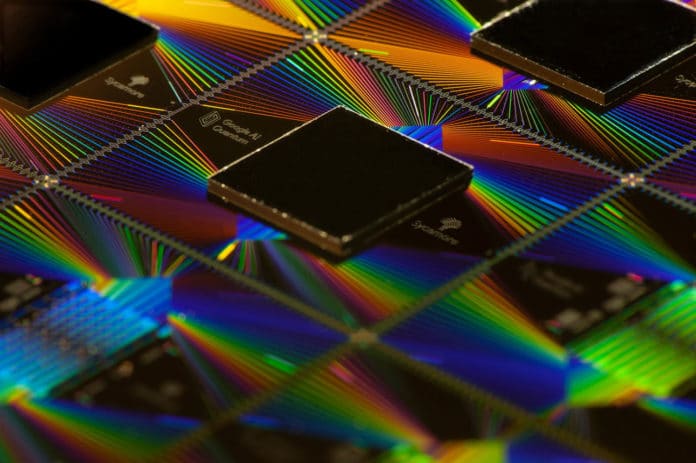An international team of researchers has created and observed a new phase of matter, popularly known as a “time crystal,” using Google’s Sycamore quantum computing hardware. Just as a crystal’s structure repeats in space, a time crystal repeats in time and, importantly, does so infinitely and without any further input of energy – like a clock that runs forever without any batteries.
There is a huge global effort to design a computer capable of harnessing the power of quantum physics to perform calculations of unprecedented complexity. While formidable technological obstacles still stand in the way of creating such a quantum computer, today’s early prototypes are already capable of remarkable feats.
“Time-crystals are a striking example of a new type of non-equilibrium quantum phase of matter,” said Vedika Khemani, assistant professor of physics at Stanford and a senior author of the paper. “While much of our understanding of condensed matter physics is based on equilibrium systems, these new quantum devices are providing us a fascinating window into new non-equilibrium regimes in many-body physics.”
In the time crystal, the atoms exhibit motion in a pattern that repeats periodically; for example, its spins flip up and down in a predictable ticking motion. But where it gets strange is that this rhythm doesn’t follow the frequency of the force that kicked it off, and in a perfect system, the atoms will keep ticking forever without further input.
While this may sound suspiciously close to a “perpetual motion machine,” a closer look reveals that time crystals don’t break any laws of physics. Entropy – a measure of disorder in the system – remains stationary over time, marginally satisfying the second law of thermodynamics by not decreasing.
Now, a team of scientists from Stanford University, Google Quantum AI, the Max Planck Institute for Physics of Complex Systems, and Oxford University have demonstrated a time crystal in Google’s quantum processor, Sycamore. The team applied a lattice of 20 qubits (quantum bits of information) with a laser to start the “ticking.” Then the qubits would only flip their spins once for every two laser pulses, breaking the translational symmetry of time and creating a time crystal. In addition, the team says it was the first time that a crystal exhibited a “many-body localization” (the phenomenon that enables an infinitely stable time crystal).
The researchers were able to confirm their claim of a true-time crystal thanks to the special capabilities of the quantum computer. Although the finite size and coherence time of the (imperfect) quantum device meant that their experiment was limited in size and duration – so that the time crystal oscillations could only be observed for a few hundred cycles rather than indefinitely – the researchers devised various protocols for assessing the stability of their creation. These included running the simulation forward and backward in time and scaling its size.
“We managed to use the versatility of the quantum computer to help us analyze its own limitations,” said Moessner, co-author of the paper and director at the Max Planck Institute for Physics of Complex Systems. “It essentially told us how to correct for its own errors so that the fingerprint of ideal time-crystalline behavior could be ascertained from finite time observations.”
